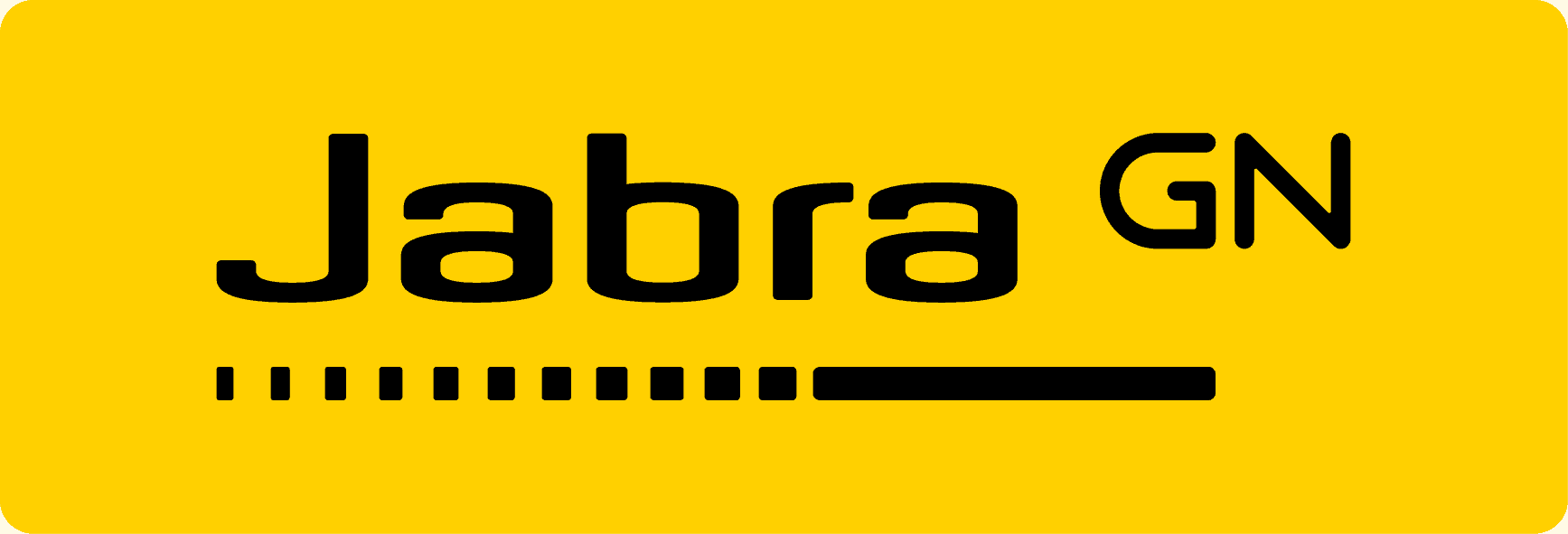Phonak vs. Unitron – Which Hearing Aid Brand Is Better?
After thoroughly testing both brands, we found that Phonak hearing aids generally deliver superior sound quality and comprehensive solutions for various degrees of hearing loss. Meanwhile, Unitron’s standout advantage is their FLEX program, which allows users to try different technology levels before purchasing or upgrading later. Both brands are owned by Sonova Group and share similar technologies, although Phonak typically offers more advanced features at a higher price point.
Phonak and Unitron are consistent candidates for our annual list of the best hearing aids brands, but in this comparison guide, we’ll help you decide which of the two is the better option for you. Your ideal choice will depend on your hearing loss severity, technological needs, budget, and preference for trying before buying versus immediate commitment to a specific technology level. Without further ado, let’s start.
Key Findings
- Phonak hearing aids offer superior performance for individuals with any level of hearing loss, from mild to profound. They feature cutting-edge technology, including Lumity and Infinio platforms with exceptional sound processing capabilities.
- Unitron’s FLEX program allows you to try different technology levels before purchasing and lets you upgrade to a higher level later if your listening needs change.
- Phonak was the first line of products to offer connectivity via Bluetooth to any cell phone, allowing users to stream phone calls, music, podcasts, or any other sound hands-free from Bluetooth-compatible devices.
- Unitron products are often priced lower than Phonak products despite offering many of the same features.
FYI: Looking to save on a pair of hearing aids? Then read our guide to the best affordable hearing aids to find options for as low as $300 for a pair.
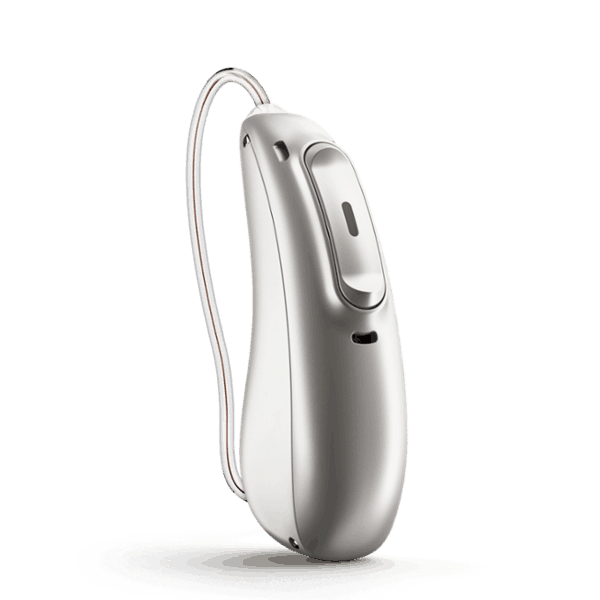
Phonak vs. Unitron
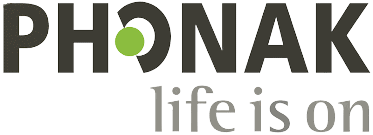
|

|
|
|---|---|---|
| Editor's Ratings | ||
| Price Range | $2,000-$8,000 per pair | $2,000-$5,000 per pair |
| Style | Various (BTE, RIC, ITE, CIC, etc.) | Various (BTE, RIC, ITE, CIC, etc.) |
| Bluetooth Streaming | Yes (most models) | Yes (most models) |
| Battery Type | Rechargeable or disposable | Rechargeable or disposable |
| Warranty | 1-4 years (varies by provider) | Similar to Phonak |
| Trial Period | Varies by provider (typically 30-60 days) | Yes, through the FLEX program |
| Remote Support | Available through myPhonak app | Available through the Remote Plus app |
| App Control | Yes (myPhonak app) | Yes (Remote Plus app) |
| Purchase Method | Through licensed hearing professionals | Through licensed hearing professionals |
| Hearing Loss Range | Mild to profound | Mild to profound |
| Unique Features | Lyric (invisible extended wear) | FLEX program for trying/upgrading |
| Contact | ||
| Website | View Pricing Links to ZipHearing.com |
Phonak Hearing Aids Overview
Phonak has consistently brought cutting-edge advancements to hearing aid technology, starting in the 1970s when they created the first behind-the-ear (BTE) hearing aid. Previously, hearing aids were worn on the body with a long wire traveling up to the ear.
Currently, Phonak offers a full lineup of hearing aid styles that help individuals with single-sided hearing problems and tinnitus, which affects roughly 10 percent of the adult population. In addition to hearing aids, they also offer wireless accessories such as remote microphones and TV connectors.
Phonak hearing aids are among the pricier brands, with pairs typically costing about $2,000 to $8,000 depending on the style, features, and technology level. Unfortunately, there is no option to purchase Phonak hearing aids online through their website. You’ll need to find a provider and hearing care specialist first, although you can kick-start that process online through a company such as Yes Hearing.
Phonak has a great lineup of hearing aid styles, from superpower devices for those with severe hearing loss to a CROS system for people with hearing loss on just one side. They even have a long-term wear, in-the-canal hearing aid. Regardless of the specific device, the entire Phonak lineup offers crisp, clear sound quality that competes with the best in the industry.
What has made Phonak stand out over the past few years is their Lumity and Infinio products. Phonak was the first to offer connectivity via Bluetooth to any cell phone, which means your hearing aid selection doesn’t dictate your cell phone choice. You can stream phone calls, music, podcasts, or any other sound hands-free from Bluetooth-compatible devices.
Pro Tip: During our Phonak testing, we noticed that the company’s naming system follows a consistent pattern: The first part relates to the physical style (e.g., Audeo for receiver-in-canal), followed by the platform name (Lumity, Infinio). Each platform represents a generation of products with hardware and software improvements.
Current Phonak Models
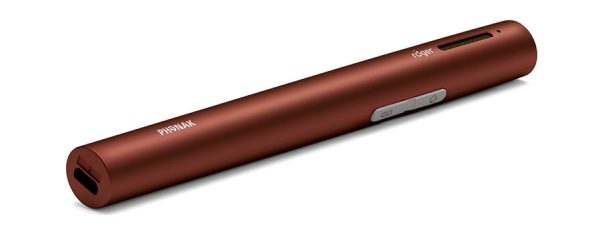
Some of Phonak’s standout models include:
- Phonak Lyric: An invisible hearing aid that delivers clear sound when placed directly in your ear canal. You can wear it daily for several months without removing it, making it a convenient choice for many individuals with hearing loss.
- Phonak Naída Lumity: The latest generation of hearing aids that provides powerful sound quality and helps users easily connect to smartphones and other devices. These hearing aids are excellent for individuals with severe-to-profound hearing loss, a condition that is associated with greater ADL impairment.
- ActiveVent Receiver: This device offers superior sound quality and is compatible with all Audeo Lumity rechargeable hearing aids. Using high-quality speaker technology, it optimizes hearing performance while blocking out noise in loud environments.
Our hands-on testing revealed that Phonak particularly excels in challenging listening environments. Features like Ultra Focus provide exceptional speech clarity in noisy situations. The Phonak accessories ecosystem, including Roger microphones, significantly enhances performance in difficult listening scenarios.
Expert Tip: Using accessories is optional, but studies show that some – such as remote microphones – can improve speech intelligibility compared to using hearing aids alone.
Unitron Hearing Aids Overview
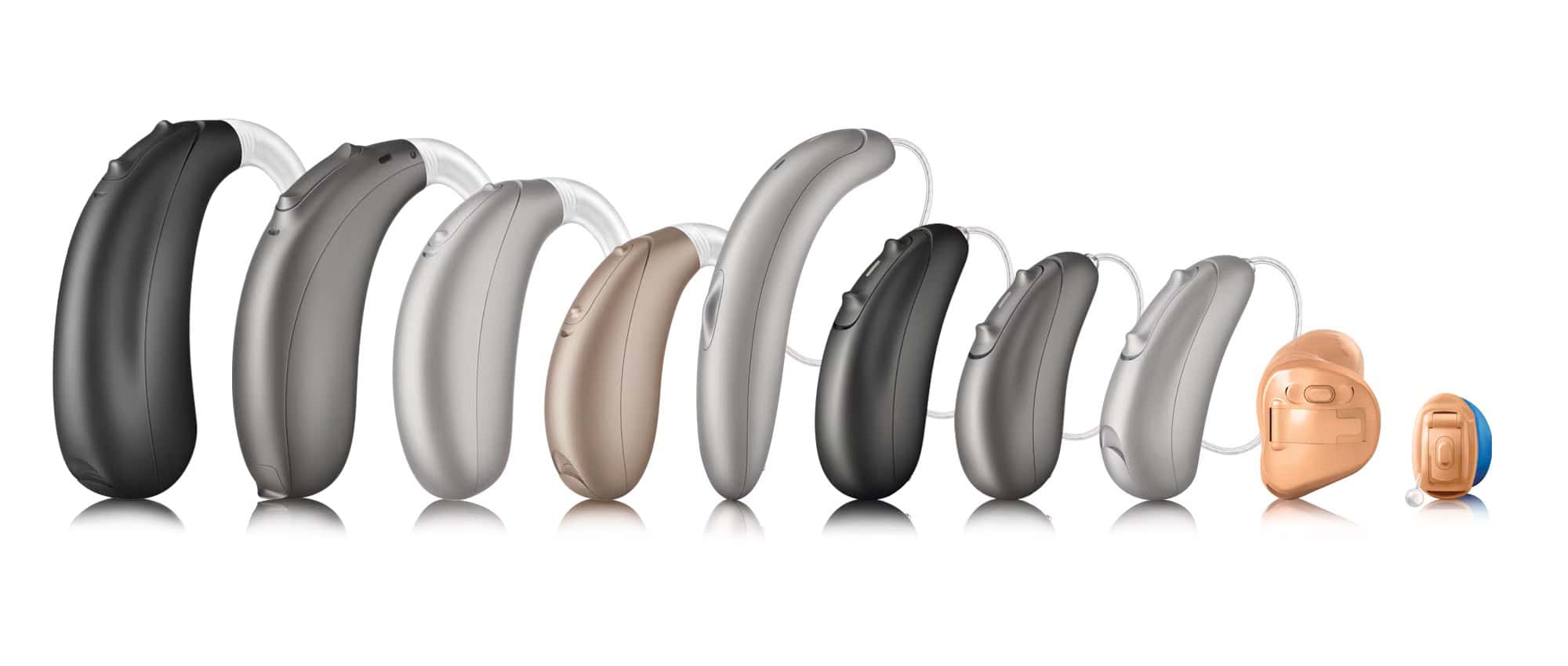
Credit: Unitron
Originally founded in 1964 as the first Canadian hearing aid manufacturer, Unitron’s main headquarters are in the Waterloo region of Canada, and their U.S. headquarters are located in Minnesota. The company operates in more than 70 countries worldwide and has a significant presence in the North American and European markets.
Unitron makes premium and entry-level hearing aids for all levels of hearing loss, programmed by an audiologist or other hearing care professional based on the hearing test results. The brand draws on their parent company’s R&D leadership to deliver high-performance hearing aids, especially universal wireless Bluetooth connectivity products.

According to our tests, three standout qualities of Unitron hearing aids include:
- Wireless streaming: Unitron hearing aids offer exceptional connectivity options for iOS and Android smartphones and customization via the Unitron Remote Plus app.
- Speech in noise processing: Vivante and Blu brands — particularly in the higher-technology tiers — offer an array of directional microphones and automatic sound processing strategies to help you hear better in noise, as well as a full line of accessories.
- FLEX: This allows wearers to try out different technology tiers of the hearing aids before purchasing and upgrade the devices later as desired.
Current Unitron Models
Unitron markets four different technology platforms:
- Vivante™ (2023)
- Blu (2021)
- Discover Next (2020)
- Tempus™ (2017)
And four hearing aid styles:
- Moxi™ Receiver-In-Canal (RIC)
- Stride™ Behind-the-Ear (BTE) (power)
- Max™ UP BTE (ultrapower in Tempus platform)
- Insera™ custom In-the-Ear (ITE)
In our hands-on testing, the Unitron Vivante platform impressed us with features like HyperFocus, which aligns the hearing aid’s directional microphones to a narrow area in front of the listener in high-noise situations. This significantly improves the signal-to-noise ratio and the listener’s ability to hear speech in challenging noise environments.
Another notable feature in the Vivante platform is 360 Conversation in Car, which allows the wearer to manually switch to a program to better hear conversations in the car, regardless of where people are sitting. This may be especially helpful for wearers who need to hear passengers in the back seat.
Did You Know? One study finds that both hearing loss and tinnitus had a positive correlation with self-reported depression symptoms. These findings underscore the importance of addressing these conditions.
Performance Comparison
Phonak and Unitron deliver quality sound experiences, although they’re designed with different strengths and pricing strategies. Remember that each brand offers multiple models with various features and capabilities, and both brands’ hearing aid models are highly customizable.
In quiet home environments, Phonak’s advanced models, particularly those with Lumity and Infinio technology, provide exceptional clarity and natural sound reproduction for conversations and music listening. Their directional microphone technology creates a comprehensive soundscape that closely mimics natural hearing.
>> Related: The Best Hearing Aids for Musicians
Unitron’s newest platforms also perform well, with features like Soft Speech Lift adding gain (volume) of up to 4 dB to soft speech in quieter listening environments. This helps users hear soft speech cues, such as consonants, which are often high-frequency sounds where many people experience hearing loss.
In our testing, Phonak demonstrated technical advantages in complex listening environments such as restaurants or crowded venues. Their advanced models feature Ultra Focus mode and sophisticated noise reduction that effectively isolates conversations from background noise.
Unitron’s HyperFocus feature in their Vivante platform aligns the hearing aid’s directional microphones to a narrow beam in front of the listener in high-noise situations. This improves the signal-to-noise ratio and the listener’s ability to hear speech in challenging noise environments.
>> More Options: The Best Hearing Aids With Background Noise Reduction
For Users With Severe Hearing Loss: Both brands offer solutions for users with more severe hearing loss, but we found Phonak’s Naída models particularly effective for severe-to-profound hearing loss, with powerful sound amplification and compatibility with cochlear implants.
Features Comparison
Both Phonak and Unitron incorporate advanced audio processing technologies with many similarities, given their shared parent company.
Phonak offers an extensive array of technological innovations. Their latest platforms feature all-access directionality combined with Ultra Focus settings that enhance speech recognition in complex audio environments. Most Phonak devices incorporate wireless connectivity for direct audio transmission from compatible devices, including smartphones and remote microphones. The myPhonak application gives users detailed control over their hearing experience, enabling customized audio profiles for different locations and the ability to receive remote fine-tuning from hearing professionals.
Phonak’s extensive supplementary device ecosystem includes the TV Connector for television audio and various Roger microphone options for challenging listening situations. These accessories substantially expand functionality across various acoustic scenarios.
Unitron’s features include wireless streaming to iOS and Android smartphones, personalized noise handling via their Remote Plus app, and tap controls that allow users to start/stop audio streaming with a tap of the hearing aids. Their Vivante and Blu platforms offer automatic environmental adjustments that adapt to different listening situations without user intervention.
Unitron’s biggest feature advantage, however, is their FLEX experience for trying and upgrading technology. FLEX allows your hearing care provider to program off-the-shelf hearing aids to different technology levels you can try at home. For a fee, FLEX allows for a technology-level upgrade after you have purchased your hearing aids, typically within 12 to 18 months after your purchase.
For Users With Tinnitus: Phonak and Unitron both provide options for tinnitus management. Our testing found that Phonak incorporates specific tinnitus management functionality in select models, while Unitron offers tinnitus maskers across all platforms and technology levels. See our list of the best hearing aids for tinnitus for more options.
Pricing Comparison
At around $2,000 to $8,000 a pair, Phonak hearing aids are among the pricier options on the market. The price varies based on the level of technology, the length of the warranty, and the provider’s services included in the purchase.
In comparison, Unitron prices are generally more affordable, ranging from $2,000 to $5,000 per pair. That is despite sharing many similar technologies from Sonova. This makes Unitron an attractive option for budget-conscious consumers who still want high-quality hearing aids.
Take note that both brands must be purchased through licensed hearing health care professionals. There’s no standard pricing; it varies significantly depending on the provider, location, included services, and specific model.
We should also make it clear that while Phonak’s pricing appears higher, the cost difference makes sense in many cases. Phonak tends to introduce new technologies before they eventually make their way to Unitron products, and they may offer more cutting-edge features in their premium models.
On a Budget? For those concerned about the high cost of hearing aids, consider over-the-counter (OTC) hearing aids that offer quality performance at lower prices. Unlike Phonak and Unitron hearing aids, you can purchase OTC hearing aids without a consultation.
Warranties Comparison
Phonak warranty terms vary depending on the hearing health care provider. Typically, Phonak hearing aids come with a manufacturer’s warranty of one to four years, covering defects in materials and workmanship. Some providers may offer extended warranty options for an additional cost.
The Phonak warranty is valid globally, which means you can find a provider almost anywhere in the world to service the hearing aids if you need a repair in a pinch. While the repair itself would be covered abroad, there may be additional charges for the hearing health care provider.

Given their shared corporate ownership, Unitron offers similar warranty coverage to Phonak. However, specific terms may vary by provider. Unitron’s warranty services are managed through the same global network as Phonak’s, providing similar worldwide coverage.
Generally, neither manufacturer covers loss of the hearing aids themselves in their standard warranties, but many hearing health care professionals offer loss and damage coverage for an additional fee.
Both brands provide comprehensive hearing aid maintenance support through their provider networks for users concerned about long-term maintenance.
Customer Support Comparison
Customer support for both Phonak and Unitron is primarily delivered through the hearing health care professional who fits your devices. This approach provides personalized, face-to-face support from a professional knowledgeable about your specific hearing profile.
Phonak offers remote support through the myPhonak app. This feature allows users to receive remote adjustments from their hearing care provider without requiring an in-person visit, combining professional support with remote convenience.
Unitron offers similar remote support capabilities through its Remote Plus app. The app lets you share in-the-moment impressions of your hearing instrument performance with your hearing care provider, who can use the information to improve your program settings. It also lets you adjust the volume and program settings on your hearing aids.
During our testing, we found that both manufacturers provide excellent supporting materials, including detailed user guides and instructional videos. The quality of ongoing support will largely depend on your specific provider, as they will be your primary point of contact for adjustments, repairs, and other services.
For users who prefer more hands-on control of their hearing aids, both brands offer comprehensive smartphone apps that allow customization and adjustments without requiring provider visits.
Accessories Comparison
Phonak offers numerous accessories to enhance hearing aid performance. Their Roger system is particularly noteworthy: It works better than other remote microphone products because it allows you to participate more easily in conversations in which multiple people are speaking. Roger accessories come in three styles:
- Roger Pen: A discreet accessory that looks like a pen, which can be held by the listener and discreetly pointed at whichever person is speaking
- Roger Select: A disc-shaped mic designed to sit in the middle of a table and facilitate participation in group conversations. The mic automatically switches the direction of focus when the speaker changes.
- Roger Table Mic II: Similar to the Roger Select but designed for working professionals participating in meetings
Like sister company Phonak, Unitron offers a comprehensive lineup of accessories. These include:
- PartnerMic: A lapel-worn microphone for one-on-one conversations in noisy environments, streaming speech from the source directly to your hearing aids
- TV Connector: Delivers sound from the TV, laptops, and tablets directly to both hearing aids
- Remote Control and IIC Remote: Allow for simple control of volume and program changes in a small but easy-to-use remote
- Charging stations for lithium-ion batteries: These easy-to-use charging stations have optional power packs for charging when an electrical outlet isn’t available.
Our hands-on testing revealed that both brands’ accessories significantly enhance the hearing experience, especially in challenging listening environments. The remote microphone options from both manufacturers dramatically improve speech understanding in noisy settings by increasing the signal-to-noise ratio.
These accessories can be invaluable additions to hearing aid systems for users who struggle with hearing in heavy background noise.
Bottom Line
Our thorough evaluation suggests Phonak and Unitron represent two excellent options from the same parent company, each with their own advantages:
Phonak might be your ideal match if:
- You want the latest cutting-edge technology as soon as it’s available.
- You’re seeking the highest level of performance in challenging listening environments.
- You have severe-to-profound hearing loss that requires powerful solutions.
- You value the extensive Roger ecosystem for difficult acoustic situations.
- You prioritize sound quality and performance over price.
Unitron could be a better solution if:
- You want to try different technology levels before committing.
- You prefer the ability to upgrade technology later if your needs change.
- You want many of the same technologies as Phonak at a generally lower price point.
- You value a good balance between performance and cost.
As both brands are owned by Sonova Group, they provide excellent solutions for hearing loss and share many technological similarities. Your choice might come down to specific features, provider preference, and budget considerations.
For those interested in exploring other options, consider reading our guides to the best hearing aids overall, Eargo hearing aids, or Lively hearing aids.
Frequently Asked Questions
-
Does Phonak or Unitron offer better value for the money?
Unitron typically offers better value for the cost, as the company provides many of the same technologies as Phonak at a lower price point. Their FLEX program also adds value by allowing you to try different technology levels before purchasing or upgrading later if needed.
-
Can I stream music with Phonak and Unitron?
Yes, most current models from both Phonak and Unitron offer Bluetooth streaming capabilities for direct audio from smartphones and other devices. Both brands were pioneers in offering universal Bluetooth connectivity to any cell phone.
-
Which brand is better for severe hearing loss?
Both brands offer solutions for severe-to-profound hearing loss, but Phonak’s Naída models are particularly renowned for addressing severe-to-profound hearing loss with powerful sound amplification and compatibility with cochlear implants.
-
Do I need to see an audiologist to purchase either brand?
Yes, both Phonak and Unitron hearing aids require a visit to a hearing health care professional and are only available through licensed providers. Neither brand sells directly to consumers.
-
How do these brands compare to OTC hearing aids?
Phonak and Unitron are prescription hearing aids that offer more advanced features and customization than most OTC hearing aids. They’re designed for all levels of hearing loss, while OTC options are only suitable for mild-to-moderate loss. For more affordable alternatives, consider MDHearing.
